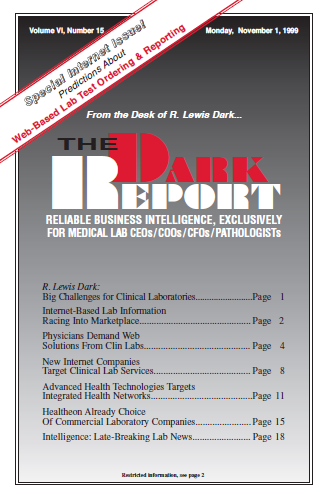CEO SUMMARY: As physicians gain personal familiarity with the Internet and its potential to enhance their medical practice, they logically begin to want their clinical laboratory to offer web-based solutions. Physicians are driving this impending marketplace shift away from proprietary PC computer ordering/reporting systems to web-based products. Only labs willing to respond will maintain their …
Physicians Demand Web Solutions From Clinical Labs Read More »
To access this post, you must purchase The Dark Report.


